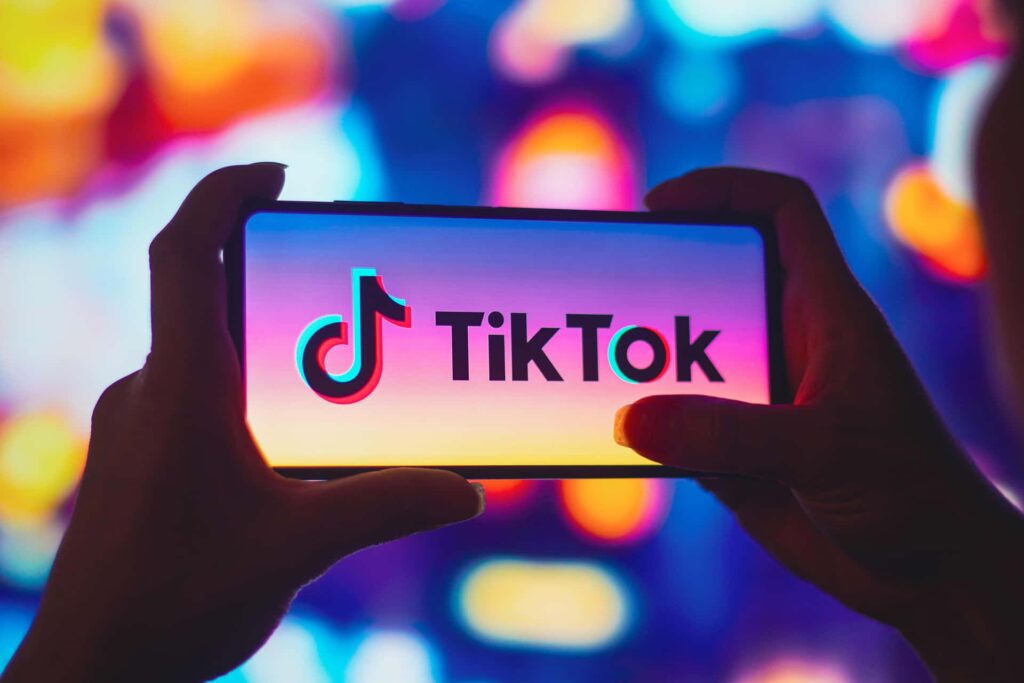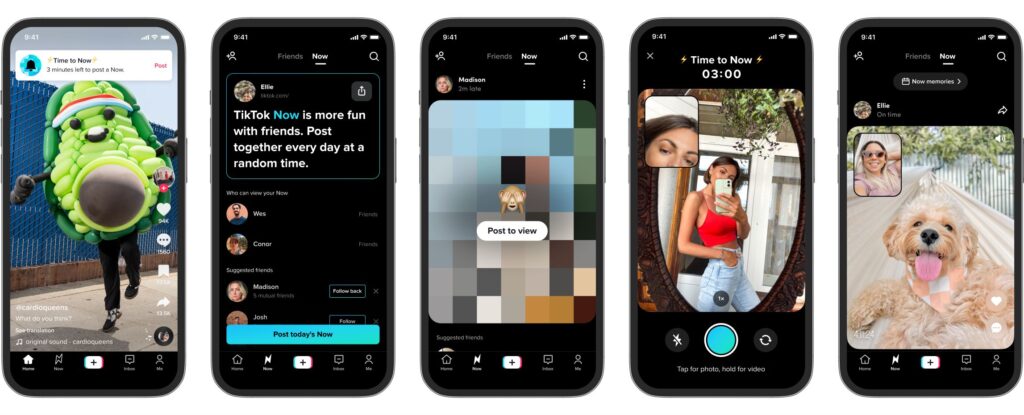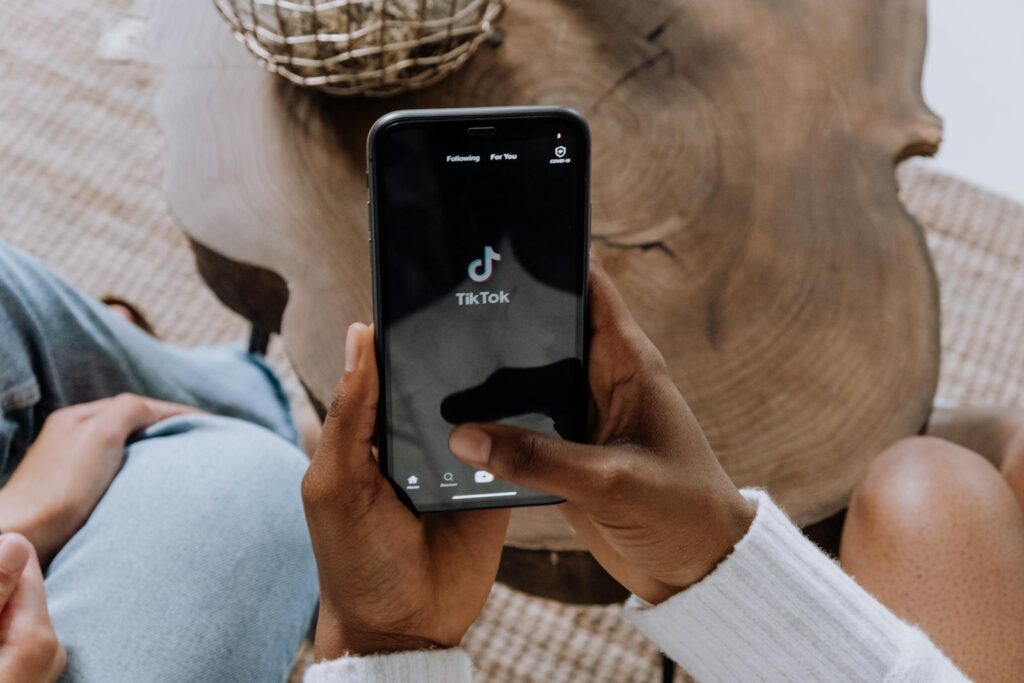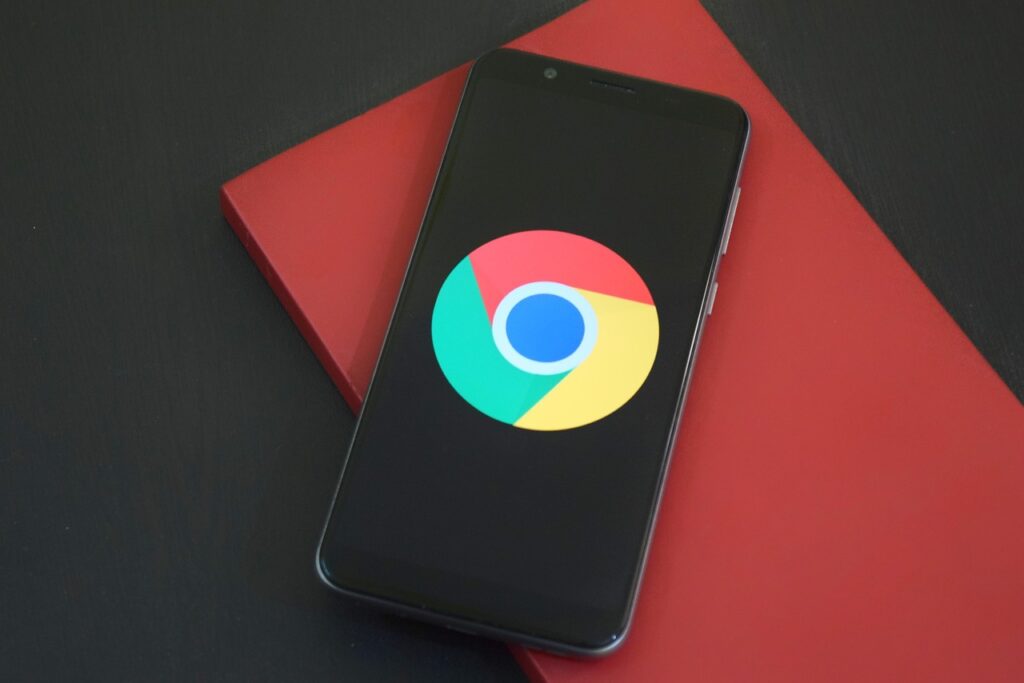
In today’s rapidly evolving digital landscape, the very essence of fame has undergone a profound metamorphosis. What was once the exclusive domain of a select elite, meticulously curated by powerful gatekeepers, has now become a sprawling, accessible arena, open to anyone wielding a smartphone and a spark of creativity. At the heart of this dramatic shift lies TikTok, the platform that ingeniously condensed entertainment into 15-second clips, turning them into a global phenomenon and irrevocably altering our understanding of celebrity culture. Yet, beneath the veneer of catchy dances and trending sounds, there lies a more intricate, analytical truth: the formidable power of data and sophisticated algorithms driving this new era of stardom.
From an analytical standpoint, TikTok’s ascent offers a compelling case study into how data relentlessly shapes our digital world. The platform’s unique architecture, built on the bedrock of real-time behavioral insights, has not merely amplified existing celebrity models; it has fundamentally rewritten them. It represents a paradigm where raw talent and genuine engagement can bypass traditional hierarchies, finding a direct route to millions through an algorithm that acts as the ultimate, unbiased talent scout. This in-depth exploration will dissect the precise mechanisms and far-reaching implications of how TikTok is not just changing the way stars rise, but how they sustain their luminescence in an increasingly data-centric universe.
This article will delve into the specific innovations and broader societal impacts that TikTok has unleashed upon the world of celebrity. We will examine the intricate dance between user behavior and algorithmic recommendations, the surprising transformation of content creators into data strategists, and the seismic shifts in established industries like music and marketing. By dissecting these multifaceted changes, we can truly grasp the scale of TikTok’s influence, understanding how it is not only minting new stars but also redefining the very nature of fame and how it endures in our interconnected global culture.

1. **TikTok’s Algorithmic Supremacy in Star-Making**The true magic behind TikTok’s unparalleled ability to mint new celebrities lies not in traditional networking or established fan bases, but within the intricate workings of its recommendation algorithm. Dubbed the “For You” page, this proprietary system stands in stark contrast to other social media platforms that often prioritize connections with known friends or existing follower counts. Instead, TikTok’s algorithm meticulously leverages vast quantities of behavioral data, continuously processing it to unearth and surface content that individual users are statistically most likely to find enjoyable and engaging, regardless of the creator’s initial standing.
This sophisticated system tracks an array of micro-behaviors, offering an unprecedented level of insight into user preferences. Every tap, swipe, and lingering gaze contributes to a richer data profile. Crucial metrics include video replays, indicating content’s rewatchability; completion rates, signaling sustained interest; shares, reflecting social resonance; likes, denoting approval; and even the subtle duration a user hovers over a video before deciding to scroll past. These diverse data points are then continuously fed into a dynamic machine-learning system, which perpetually refines its content suggestions, ensuring a hyper-personalized feed that is engineered for maximum user stickiness and discovery.
The genesis of Charli D’Amelio’s meteoric rise serves as a quintessential example of this algorithmic power in action. Her early dance videos didn’t gain traction because she arrived on the platform with a pre-existing massive following or significant industry backing. Rather, her content inherently hit the precise data signals that the algorithm was designed to identify: consistently high engagement metrics, impressive repeat view numbers, and an undeniable broad appeal that resonated across diverse user segments. This potent combination transformed her into an algorithmic favorite, propelling her content to millions of users globally.
From a data analyst’s perspective, it is truly compelling to observe how meticulously this model has been constructed. It is engineered to intrinsically reward content quality and genuine engagement metrics above all else, rather than merely validating the pre-existing clout or reputation of a creator. This fundamental shift democratizes the path to stardom, allowing raw, engaging content to find its audience organically through the sheer force of its data-driven appeal.

2. **Viral Content as a Data-Driven Launchpad**TikTok’s distinctly data-driven methodology for content discovery has fundamentally revolutionized the very mechanics of how viral trends emerge and propagate across the digital landscape. Historically, achieving virality on traditional social media platforms often necessitated a significant, pre-established online presence or a substantial network of followers to even begin to gain momentum. TikTok, however, has dramatically disrupted this prerequisite, creating a new reality where users with absolutely no existing follower count can realistically achieve millions of views in a single overnight surge.
This unprecedented democratization of content visibility is a direct consequence of the platform’s reliance on data, rather than the conventional currency of reputation or existing social capital. From the discerning vantage point of a data analyst, every single viral trend unfolding on TikTok presents itself as an expansive, real-time case of A/B testing, conducted at an astonishing scale. The moment a user uploads a new video, TikTok initiates a strategic distribution process by showcasing it to a small, carefully selected cohort of initial users. The platform then meticulously measures their immediate reactions and interactions.
These critical initial measurements encompass a range of behaviors: how frequently users choose to replay the video, the total duration for which they engage with it, and whether they opt to share it with others or leave comments. If the video garners the desired positive responses and engagement signals from this initial “test group,” the algorithm interprets this as a strong indicator of broader appeal. Consequently, the video is then strategically pushed out to progressively larger and more diverse audiences, amplifying its reach exponentially through a dynamic, data-fueled cycle that continuously optimizes for maximum engagement in real time.
This intricate process explains precisely why even a seemingly simple lip-syncing video or a brief, clever 10-second joke can suddenly achieve massive traction. Its widespread success is directly attributable to the data suggesting it will resonate powerfully with a substantial segment of the broader user base. The platform is relentlessly fine-tuning its deep understanding of exactly what its audience desires to consume, and it ingeniously leverages every single user action to perpetually improve and refine its predictive capabilities, ensuring a constantly engaging and highly personalized content experience for everyone.

3. **Creators as Data Analysts: Decoding Success Metrics**For many data analysts, interpreting intricate patterns and meticulously tracking metrics constitutes the core of their daily work. Intriguingly, TikTok operates on a remarkably similar principle, effectively turning its most successful content creators into their own intuitive data strategists. The foundational analytics provided by the platform are deeply rooted in a set of key engagement metrics that offer crucial insights into content performance. These include total watch time, various forms of user interactions such as likes, comments, and shares, and perhaps most importantly, video replays. Collectively, these metrics provide an invaluable feedback loop, allowing creators to discern precisely what content resonates most effectively with their audience and continuously refine their creative approach.
When we undertake an analysis of the vast landscape of viral TikTok content, certain recurring patterns emerge with remarkable consistency. For instance, shorter videos consistently demonstrate higher completion rates, a critical metric for algorithmic promotion, emphasizing the premium placed on conciseness and immediate impact. The strategic incorporation of trending music or popular sounds has been shown to significantly increase a video’s overall visibility and discoverability. Furthermore, specific content categories, such as engaging challenges or comedic sketches, reliably perform well, indicating evergreen appeal that transcends fleeting trends.
Armed with this understanding of these underlying patterns, TikTok creators are empowered to strategically tailor their content. They can consciously — or, in many cases, subconsciously — optimize their creations to significantly maximize their probability of achieving viral success. A video’s ascent to viral status, therefore, is rarely just a serendipitous stroke of luck. Instead, it is increasingly the direct outcome of a creator’s ability to intuitively comprehend and effectively leverage engagement data, transforming raw viewership numbers into actionable insights that inform future content strategy.
In this evolving ecosystem, TikTok creators are, in essence, becoming their own sophisticated data analysts. They engage in a continuous cycle of testing new content ideas, iterating on successful formats, and refining their storytelling approach to align ever more closely with evolving audience preferences. This dynamic process of adaptation is driven by the real-time performance data of their previous videos, creating a feedback loop where each new post is a carefully considered experiment designed to enhance their personal brand and maintain their relevance in the fast-paced world of digital fame.

4. **The New Equation for Fame: From Gatekeepers to Algorithms**Adopting a broader perspective, TikTok has fundamentally altered the very conceptualization of celebrity in the modern age. Where fame was once predominantly sculpted and dictated by established connections, powerful industry gatekeepers, and traditional media institutions, it has now become intrinsically driven by algorithms. The new reality on TikTok dictates that enduring success is less about who one knows within the industry and far more about one’s innate ability to consistently capture and retain the attention of a vast, global audience, even if that engagement lasts for just a fleeting 15 seconds.
As a data analyst, this profound evolution in the mechanics of fame is particularly captivating, as it starkly underscores the rapidly escalating importance of data in virtually every facet of our contemporary lives. On TikTok, the traditional subjectivity surrounding what constitutes a “good” or “successful” video has largely dissipated; instead, that judgment is now quantifiable, measurable, and to a significant degree, predictable through the cold, hard numbers. Fame and success on this platform are no longer ethereal concepts but tangible outcomes rooted in precise data points.
In a world where data increasingly serves as the primary engine driving everything from pivotal business decisions to the intricate processes of content creation, TikTok emerges as a definitive, shining example of how sophisticated algorithms and the strategic application of data can utterly disrupt and dismantle long-standing, traditional models of celebrity. We are currently witnessing the pronounced rise of what can be accurately termed “data-driven celebrities.” These individuals possess an acute awareness and remarkable aptitude for optimizing their content based on real-time engagement insights, continuously evolving and refining their personal brands with each new, strategically informed post.
The CNN analysis further accentuates this pivotal shift, noting that “Like social media giants before it, TikTok hasn’t just contributed to the cultural conversation. It’s literally changed how entire industries operate and affected how we live, eat, watch and buy.” This profound disruption extends directly to the creation of stars. TikTok’s algorithm, with its uncanny ability to learn users’ interests and preferences in real time as they interact with content, regularly propels videos created by everyday individuals to millions of views. This instantaneous exposure has forged an entirely new equation for fame, where a single, impeccably timed viral video possesses the power to catapult an unknown individual into the dazzling spotlight seemingly overnight.

5. **A New Business Ecosystem: Talent Agencies and Marketing**There’s a pervasive misconception that social media content creation is little more than a trivial pastime, a casual lark rather than a legitimate profession. However, the immense success and pervasive influence of TikTok have unequivocally shattered this notion, giving rise to an entirely new, multi-layered industry that thrives around the platform’s endlessly churning cogs of fame. This emergent ecosystem comprises sophisticated infrastructure and specialized services, underscoring the serious economic weight now attached to digital stardom.
This burgeoning industry is characterized by several key components. Major talent agencies and dedicated managers have shifted their focus, now committing substantial resources solely to identifying, nurturing, and growing the next generation of TikTok stars. Concurrently, specialized TikTok-centered marketing agencies have proliferated, offering high-dollar clients bespoke strategies specifically designed to leverage the platform’s unique dynamics for brand promotion and audience engagement. Furthermore, a peculiar but impactful trend saw similar TikTok creators often cohabiting in dedicated “influencer houses,” spaces entirely devoted to collaborative content creation for the app.
The platform itself has recognized and further solidified this professionalization. As early as January, TikTok launched an official talent portal, a strategic move designed to streamline and facilitate the brokering of deals between various brands and their influential clients. This infrastructure development signals a clear shift towards formalizing the relationships and transactions within the burgeoning creator economy, making it easier for commercial entities to tap into the immense reach of TikTok personalities.
The financial upside for successful creators within this new ecosystem is nothing short of staggering. Beyond the countless “micro-celebrities” who enjoy fleeting or niche fame, TikTok has also cultivated a class of full-fledged digital stars. These top-tier creators reportedly command five-figure revenues for each sponsored post, accumulating personal net worths that stretch into the millions of dollars. This level of earning potential decisively positions TikTok as a formidable engine for economic opportunity, attracting entrepreneurial talent and transforming digital content creation into a highly lucrative career path.
Read more about: Remembering 2005? A Deep Dive into Google’s Transformative Evolution from Search to Global Tech Empire

6. **Accelerating the Trend Cycle and Micro-Celebrity**While the internet has long been a fertile ground for trends to germinate, take hold, and then swiftly fade, TikTok has supercharged this cycle to an unprecedented degree. The sheer scale and global reach of the platform, coupled with the rapid-fire, short-form nature of its content and its perpetually adjusting algorithm, are all contributing factors to the heightened ephemerality of digital trends. What was once a gradual cultural shift now unfolds in a blur, condensing the lifespan of trends into fleeting moments of intense popularity before they are inevitably superseded by the next viral sensation.
As the digital agency Digital Fairy aptly concluded in their report, “How TikTok Killed the Trend Cycle,” the traditional model has been inverted. They observed, “Cultural conventions that dictated trend cycles used to follow a linear brand-to-consumer funnel.” However, this dynamic has been fundamentally disrupted: “The consumer has shifted the paradigm,” their report states, explaining that users now “dictate what’s in style from a never-ending archive of inspiration, as the fashion industry tries to keep up.” This highlights the reactive position of traditional industries scrambling to keep pace with digitally native cultural shifts.
Trends originating on TikTok, where the vast majority of videos are no longer than a minute, intrinsically possess significantly shorter lifespans compared to trends born on platforms with less high-speed and high-volume content flows. These distinctive “microtrends,” whether they pertain to a particularly interesting statement top or a must-have accessory, tend to monopolize the cultural conversation for a mere few weeks or perhaps a couple of months before swiftly moving on. This accelerated contraction of the trend cycle has, in turn, raised pertinent concerns among users regarding issues such as fast fashion and the broader implications of overconsumption.
This rapid churn also gives rise to a specific type of fame: the “microcelebrity.” These individuals gain significant recognition either for a very brief period, often linked to a single viral moment, or become widely known for something highly specific within a very particular niche community. The context notes numerous examples, from “adorable little kids waxing poetic about corn” and “skaters sipping Ocean Spray” to authors whose decade-old books receive a second chance at success. Sometimes, these moments of fleeting fame can be skillfully prolonged, allowing a creator to meticulously build a larger, more stable brand out of what initially began as nothing more than a single, incredibly fortunate turn of the algorithm.
Moreover, the unpredictable nature of TikTok’s virality means that even already established celebrities are not immune to its influence. An iconic moment, whether carefully orchestrated or entirely spontaneous, can either afford them a significant moment of positive public relations or, conversely, compel them to navigate a period of challenging scrutiny, all due to serendipitous TikTok timing. Emma D’Arcy, the star of “House of the Dragon,” captivated audiences when a clip of them sensuously suggesting a “Negroni Sbagliato with Prosecco in it” went viral, leading to a notable spike in demand for the sophisticated cocktail. Similarly, Cincinnati Bengals quarterback Joe Burrow became the subject of thousands of admiring TikToks during a football season, and Pedro Pascal, a prominent actor for many years, saw his star ascend even higher, thanks in part to an endless stream of TikTok content dedicated to him, even warranting a parody on “Saturday Night Live.” This machine of fame and fate remains highly unpredictable, demonstrating its capacity to choose anyone, regardless of their prior celebrity status.

7. **Launching Niche Interests into the Mainstream**TikTok’s fascinating impact: surfacing specialized interests into mainstream consciousness. Its algorithm connects users with content they didn’t know they needed, creating vibrant, engaged communities. This bypasses traditional discovery, directly connecting creators to eager audiences.
This content delivery system algorithmically curates and delivers content directly to users. The result is a thriving ecosystem where “no interest is too small or obscure to coalesce into a community.” From sea shanties to “sexy blue aliens” or Jewish pop music, TikTok fosters profound connections. While popularity might be fleeting, lasting communities remain significant.
These algorithmically forged communities often serve as vital support groups for individuals facing shared challenges, like recovering alcoholics or those living with rare diseases. The platform offers genuine spaces for mutual support and understanding.
Groups specializing in “little-known cultural art forms or environmental conservation” effectively reach new audiences. This creates a mutually beneficial exchange: critical awareness spreads, and users discover something new and enriching. It’s a testament to the algorithm’s capacity to connect disparate human experiences, fostering education and empathy globally.
Read more about: The Dynasty Architect: Unveiling Kris Jenner’s Unexpected Rule and the Empire-Building Playbook Behind the Kardashian-Jenner Fortune

8. **Revolutionizing Product Marketing and Retail**From a business analytics standpoint, TikTok has become an indispensable battleground. Where people gather online, commercial interests follow; TikTok’s viral potential represents a “marketing jackpot.” The platform compels brands to re-evaluate strategies, embracing this dynamic new opportunity.
“BookTok,” the vibrant community of readers, exemplifies this disruption. It rapidly became a major driving force in book sales, influencing how major retailers like Barnes & Noble market and display products. This organic, user-driven recommendation engine bypasses traditional advertising, demonstrating the immense power of peer-to-peer influence.
The impact on individual authors has been staggering. Colleen Hoover, a fiction author, witnessed an astronomical rise directly attributable to the app. In 2021, Hoover sold 1.9 million copies; by 2022, that number rocketed to 14.3 million physical copies. Her publisher explicitly acknowledged TikTok’s role, noting the #ColleenHoover hashtag garnered billions of views.
However, this powerful trendsetting introduces negative ramifications for publishing. If publishers focus solely on viral potential, it could marginalize books not commanding a massive audience, particularly those featuring “marginalized backgrounds.” As Helen Hoang lamented, ‘Look at what’s going viral on TikTok… It’s not African American love stories,’ raising concerns about diversity.
Read more about: The 12 Unsung Heroes: ‘Dumb’ Tech Gadgets That Actually Deliver Value and Are Worth Every Penny

9. **Deep Disruption of the Music Industry**No industry has felt TikTok’s transformative power more acutely than music. Initially a music and dancing app, its presence reshaped how artists gain traction and achieve popularity. Musicians shifted from record deals to viral status, testament to its direct influence on charts.
When a track features in a TikTok trend, it can create a potent “earworm” that users seek out, propelling it up charts across streaming platforms. This organic discovery, fueled by shared cultural moments, represents a paradigm shift from traditional marketing. Spotify, recognizing this, maintains lists dedicated to music emerging from the app.
Olivia Rodrigo’s “drivers license” illustrates this. The song gained traction on TikTok in 2021 after a parody video went viral. This directly influenced music charts and generated substantial revenue, shattering Spotify’s record for single-day non-holiday streams and topping the Billboard Hot 100 for eight weeks.
Other artists like Lil Nas X with “Old Town Road” followed similar trajectories. The app even shapes art; Drake’s “Toosie Slide” featured a pre-choreographed dance for TikTok success. While critics argue a “TikTok music formula” compromises quality, its power to reorient a billion-dollar industry is undeniable.
Read more about: Unemployed to Unstoppable: One Man’s Inspiring Journey to Millionaire Status

10. **The Evolving Psychological Contract Between Stars and Fans**Beyond economic disruption, TikTok profoundly altered psychological dynamics between celebrities and audiences. Distant admiration evolved into an intricate “psychological contract,” laden with unspoken expectations and a pervasive “illusion of intimacy” facilitated by digital platforms. This dictates how public figures engage and how fans perceive their availability.
Social media, particularly TikTok, cultivates unprecedented closeness. Stars responding to DMs or taking live requests foster “digital intimacy,” offering fans unimaginable glimpses into their lives. Psychologically, “the brain processes mediated images the same way it processes images encountered in real life,” blurring boundaries when a star speaks directly to the camera.
This transforms “parasocial relationships”—one-sided emotional connections—into “one and a half” relationships. The mere possibility of direct communication, even if infrequent, heightens closeness and emotional involvement. Fans develop affection and loyalty, often believing the celebrity “knows and understands” them, engaging in “relational maintenance” by checking for updates. These bonds offer companionship and aid identity formation.
However, constant interaction can cause the “human being on the other end” to be lost, fostering entitlement. When admiration becomes problematic, it veers into obsession. Psychologist Lynn McCutcheon identifies “borderline-pathological” worship, where a small percentage might engage in “illegal activities.” This “absorption-addiction model” links intense worship to depression, anxiety, and poor relationships. Recognizing healthy appreciation versus unhealthy fixation is critical.
Read more about: Beyond the Bell Bottoms: Unpacking the Fates of Hollywood’s Most Iconic 1970s Stars – Where Are They Now?

11. **The Hidden Economics of Modern Fame: From Attention to Billions**Behind TikTok fame lies a sophisticated, multi-billion-dollar economic machine. The modern celebrity is a structured business entity, leveraging personal brand equity for colossal wealth. This transformation from “attention” to “profit” disrupts the entertainment’s financial landscape.
Many high-profile personalities establish “Celebrity LLCs or Loan-Out Corporations” to manage income streams, protect assets, and optimize tax strategies. This corporate structure allows them to “loan out” services, separating personal and professional finances. Beyond entertainment, figures like Rihanna and Ryan Reynolds pivoted into serious entrepreneurship, converting influence into business assets. Magic Johnson built a reported $1 billion investment company.
Celebrity economics operates within an “attention economy,” where consumer attention is primary currency. Both traditional and social media platforms exist symbiotically with celebrities, monetizing this attention through strategic partnerships. MCNs bridge content production with e-commerce, creating lucrative ecosystems.
The influencer economy is the most recent, explosive evolution, soaring from $1.7 billion to an estimated $250 billion. Top creators command astonishing revenues: Instagram influencers earn “six figures per post,” and YouTube distributed $30 billion. Businesses consistently report high returns. Yet, prosperity is unequal; most struggle while a few amass fortunes, with “white male influencers typically earn[ing] more.”

12. **The Unseen Dark Side of Digital Celebrity**While TikTok showcases digital fame’s dazzling potential, it’s crucial to acknowledge its profound “dark side.” Beneath adoration and spotlight lies a devastating psychological cost for many; personal boundaries dissolve and mental well-being becomes perilously fragile. Fame offers no immunity to psychological issues, often exacerbated by public status.
The demanding nature of the entertainment industry, with its constant need to perform and maintain an idealized image, exacts a severe toll on mental health. Studies link “intense celebrity worship with depression, anxiety, and poor-quality relationships” for fans, but celebrities themselves are at the epicenter. Figures like Selena Gomez and Demi Lovato openly share struggles, underscoring challenges in the public eye.
For celebrities, privacy is a rare and expensive commodity. Paparazzi intrusion, tragically exemplified by incidents involving Britney Spears, creates dangerous situations. Social media amplifies this vulnerability, with public posts inadvertently revealing locations and offering new avenues for surveillance. The financial burden of security is staggering, often costing hundreds of thousands or millions annually.
The psychological contract of fame involves unwanted, round-the-clock surveillance many find unbearable. As Natalie Gauci observed, the constant public gaze can lead to a headspace “where everything feels like a fantasy and then nothing is reality anymore.” This unending scrutiny, fueled by the digital age, can erode a celebrity’s sense of self, blurring public persona and private identity, ultimately challenging their well-being.
Read more about: From Stardom to Screens: How 12 Viral Moments Reshape Public Perception Forever
As we navigate this intricate, algorithm-driven landscape, it becomes undeniably clear that TikTok’s impact on celebrity is far more than skin deep. It’s a seismic shift, redefining everything from how niche cultures find their global voice to how multi-billion-dollar industries operate, and even the very psychological fabric connecting stars to their ardent admirers. The platform has irrevocably woven itself into the tapestry of modern fame, creating a dynamic, data-centric universe where innovation, influence, and the sheer power of connection continue to reshape our understanding of what it means to be famous—and how that fame endures—in the 21st century.



